#environmental movement
Text
From water-testing polluted rivers to measuring radiation levels, ordinary people are taking environmental research into their own hands.
#good news#environmentalism#science#citizen science#science is too important to be left to the scientists#environment#nature#water#clean water#water is life#conservation#environmental movement#direct action
371 notes
·
View notes
Text

Earth Day History
Earth Day, first observed on 22 April 1970, is considered the beginning of the modern environmental movement.
As a response to increasing environmental concerns, like the oil spill in Santa Barbara in 1969, U.S. Senator Gaylord Nelson founded Earth Day to raise awareness about how to protect the environment.
Nelson and activist Denis Hayes organized teach-ins on college campuses that included various groups and organizations, drawing inspiration from protest teach-ins of the era.
With this massive mobilization, the U.S. developed key environmental laws and the Environmental Protection Agency (EPA) was created.
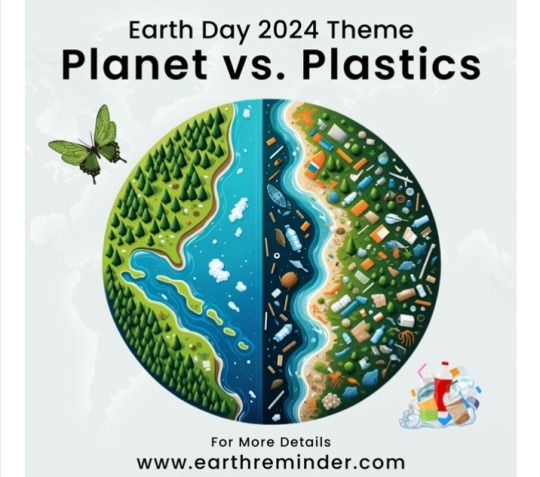
Earth Day 2024 Theme
The theme of Earth Day 2024 is “Planet vs. Plastics.”
This is about fighting the big problem of plastic all over the world. Earth Day organization wants to bring people from different places together.
The goal is to make much less plastic, 60% less by 2040.
We want a future without so much plastic. This is not just about having less trash, but it is also about keeping us and the environment healthy.
#Earth Day#Earth Day 2024#environmental movement#environmental concerns#U.S. Senator Gaylord Nelson#Denis Hayes#Environmental Protection Agency (EPA)#Planet vs. Plastics#environmental laws#environment#save mother earth
118 notes
·
View notes
Video
Willow would emit more climate pollution annually than more than 99.7% of all single point sources in the country. It’s estimated that the oil from Willow, when burned, would add more than 280 million metric tons of climate pollution to the atmosphere over the next 30 years — equivalent to the annual emissions from 76 coal-fired power plants. Willow is a climate disaster we just can’t afford.
https://stopwillow.org/
#tiktok#oil#climate change#climate crisis#collective action#environmental movement#environmental activism#environment and nature#Environment#call to action#willow project#green energy
643 notes
·
View notes
Text


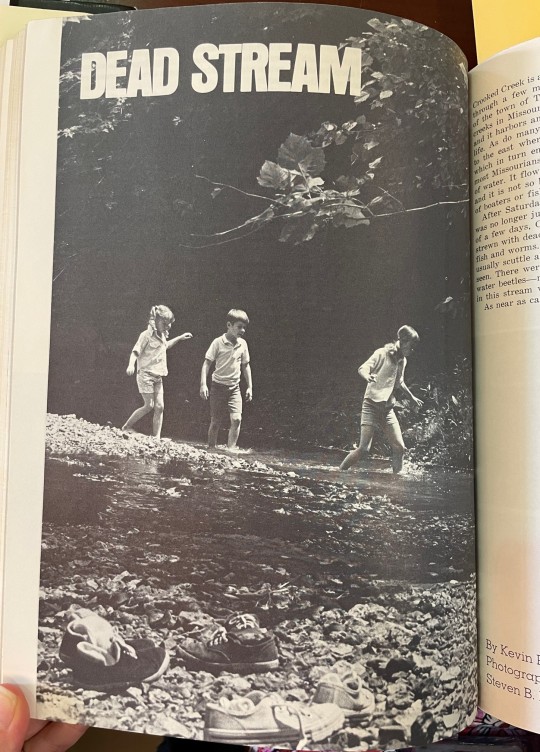


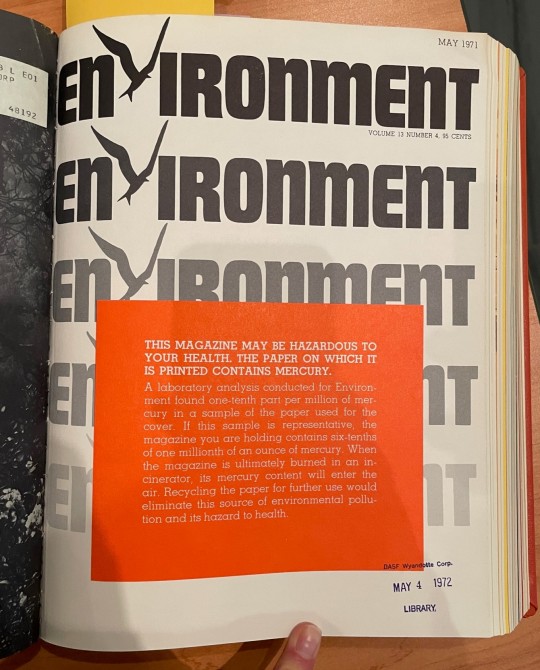

Environmental Activism in Print
In the mid-1950’s a group of scientists, doctors, community members, and women activists based in St. Louis, Missouri became increasingly concerned about the health effects of atomic testing and fallout so they created a group called the Committee for Nuclear Information. They realized that the public did not have full and accurate information about the risks and decided that the creation of a magazine was their best chance of making a difference to inform the public. The magazine started in 1958 with the title Nuclear Information. After the Atmospheric Test Ban Treaty was signed in 1963 the group decided to shift their focus to more general environmental issues and changed title of the magazine to Scientist and Citizen and the name of their group to Scientists' Institute for Public Information. The magazine changed names again to Environment in 1969 to 1997. This magazine is extraordinary for its time because its purpose was to use the scientists as conduits of information to the public supposedly without political bias.
We have issues from 1969 to 1997. Environment
There's a great chapter on the creation of this activist committee in the book Disrupting Science by Kelly Moore.
#enviroment#environmental movement#environmental activism#science activism#activism#journals#DDT#new car smell#pollution#recylcing#toxic chemicals#air pollution#water pollution#othmeralia
17 notes
·
View notes
Text
Earth Day.
I was 10 and a memeber of my school's Ecology Club on the first Earth Day. My poster design won a contest. Somewhere I still have the ribbon.
When I was 10 most of America's cities had air pollution. Water pollution was everywhere. Bald eagles, wolves, bison, and many, many animals and birds were on the brink of extinction. Litter was everywhere.
Because people acted, water and air pollution lessened and even disappeared. So did litter. Wildlife was saved.
I wish we'd kept up with this. If we had, America would no longer be dependent on fossil fuel, and everyone would have environmentally and ecologically healthy homes and buildings.
Now when I take walks I see litter all over the place. I see teenagers from the local high school toss their trash wherever they please.
We can go back to the action and idealism of Earth Day, if people have the will to do it, and the willingness to sacrifice.
youtube
.
youtube
.
youtube
I had this Ecology flag patch on my jeans.

4 notes
·
View notes
Text




Here’s my personal recommendation of a YouTube channel to check out:
#tumblr recommendations#recommendation#recommend#youtube recommendations#youtube#youtuber#youtube channel#environmentalism#environmental#environmental movement#environmental activism#environment#native plants#native wildlife#eco friendly#ecofriendly#ecology#nature#naturecore#ecosystem
4 notes
·
View notes
Text
Greenwash, Lithium & Eco-Fascism
Proved:
Greenwash Is Ecoterrorism, Eco-Fascism – and High-Tech, Neo-Feudal “Green” Imperialism
Indigenous cultures in the “lithium triangle” of Chile, Argentina and Bolivia are being robbed, subjugated, poisoned and plundered, to make Teslas and cell phones. Corporate-state violence is the continuing norm, in response. Welcome to “Green” Imperialism.
Cell phones, tablets, laptops and electric…
View On WordPress
#activism#alliance#allies#analysis#anti-imperialism#Batteries#colonialism#Davos#Earth#eco-fascism#ecocide#economics#electric car#environment#environmental imperialism#environmental movement#environmentalism#ESG#fascism#geopolitics#Global South#Great Reset#Green Imperialism#Green Left#green movement#Green New Deal#greenwash#imperialism#indigenous#Latin America
6 notes
·
View notes
Note
I like the creativity of your haikus
Thank you for the question. I love nature, so I write haikus based on living things. Since there is a restriction that photos must be included, there are many haikus of plants. When I was a student, I was involved in an environmental movement and wrote flyers, which gave me practice in concisely summarizing sentences. That's why I'm good at short sentences.
7 notes
·
View notes
Photo
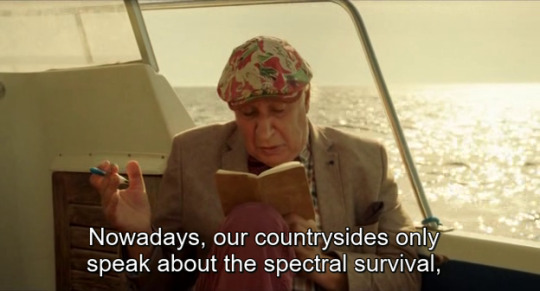


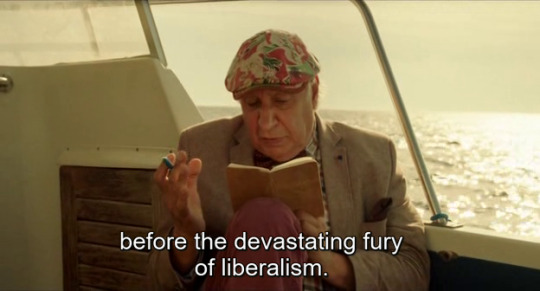
Au Fil D'Ariane [Ariane's Thread] (Robert Guédiguian - 2014)
#Au Fil D'Ariane#Ariane's Thread#comedy-drama film#beauty#Robert Guédiguian#French cinema#Ariane Ascaride#France#Jean-Pierre Darroussin#Jacques Boudet#Anaïs Demoustier#European cinema#Youssouf Djaoro#Lola Naymark#Europe#environmental movement#climate change#liberalism#earth#Bouches-du-Rhône#Marseille#Marsiglia#Serge Valletti#sea#roman amphiteatre#poetic realism#turtle#boat#restaurant#friendship
3 notes
·
View notes
Text
It all began with Högertrafikomläggningen, Swedish for “the right-hand traffic reorganisation”.
On 3 September 1967, Sweden switched from driving on the left to driving on the right. The change mainly took place at night, but in Stockholm and Malmö all traffic stopped for most of the weekend while intersections were reconfigured.
So sweet was the resulting city air that weekend that environmental enthusiasm went sky high. It was a moment that would change the world.
Three months later Sweden, citing air and other pollution, asked the UN to hold the first-ever international environmental conference, initiating a process that would lead to a groundbreaking gathering in its capital in 5 June 1972, the 50th anniversary of which will be marked next week. This was the beginning of a long and slow struggle to find and agree global solutions to these newly understood global environment problem. Twenty years later, the Rio conference would follow in the same month, kicking off UN climate summits, the most recent of which was held in Glasgow last autumn.
And yet critical mistakes were made at this early juncture. Progress, as we know, has been glacial in the years since. Now, looking back at the first steps on that journey, it’s hard not to see that, although in there were so many issues the conference got right, there were also some crucial issues it got wrong.
The Stockholm conference – held in the city’s Folkets Hus the site of both a former prison and a theatre specialising in farces – gave green issues international import. In the 1960s, environmental issues had seemed local, not global. In Britain, for example, the last of the great London smogs killed 750 people in 1962, while tragedy struck four years later in Aberfan, Wales, with the collapse of a colliery spoil tip. In Japan, people wore masks against air pollution. There was drought in the Sahel. And in 1969 a passing train ignited oil in Ohio’s Cuyahoga River, setting it ablaze.
But this was also a decade in which there were early stirrings of revolt against the environmental destruction. The World Wildlife Fund launched in 1961 with a special issue of the Daily Mirror carrying the front-page headline “DOOMED”. Rachel Carson’s book Silent Spring savaged pesticides the next year, and in 1969 an undergraduate Prince Charles first entered the fray, lobbying the then British prime minister, Harold Wilson, about Atlantic salmon at an event at the Finnish embassy.
But these were isolated voices, denounced and dismissed by the powerful. Carson said the US chemical industry wanted to return to “the dark ages” where “insects and vermin would once again inherit the Earth”. The then US agriculture secretary wrote to former US President Dwight Eisenhower, saying that since Carson was unmarried, despite being “attractive”, she was “probably a communist”.
The plan for an international conference in Stockholm initially had so little support that it was dismissively called “the Swedish matter” at the UN. It took two years of lobbying, against UK and French opposition, before the general assembly backed the proposal. As it happened, this (January 1970) was when I was told by a far-sighted editor at the Yorkshire Post that we needed to be covering this stuff and my long stint on the environment beat – the longest in the world as far as I am aware – began.
#environmentalism#environmental movement#cop26#cop27#history#journalism#Geoffrey Lean#conference of parties#pollution
44 notes
·
View notes
Text
Vote Earth to tell elected leaders to take action for the planet!
Educate yourself about the science behind climate change and show responsibility in addressing it by taking climate action to the next level. Send a letter to your local elected officials, speak up at your next town hall meeting, or use EARTHDAY.ORG’s Vote Earth hub to learn about your voting rights, register to vote, and get reminders for important voting deadlines.
#Invest in our planet#planet earth#environmental activism#environmental movement#VOTE EARTH!#earthday#22 april#climate action
4 notes
·
View notes
Text
3 notes
·
View notes
Text
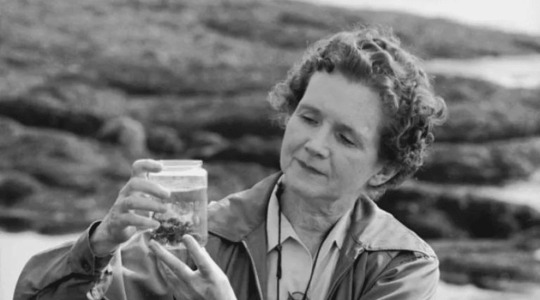
In the early 1960s, a soft-spoken biologist named Rachel Carson published a groundbreaking book that would ignite a global environmental movement.
#60s#silent spring#books#biology#Rachel Carson#environmental movement#pesticides#chemicals#hidden truths
0 notes
Text
The Price of Paperless
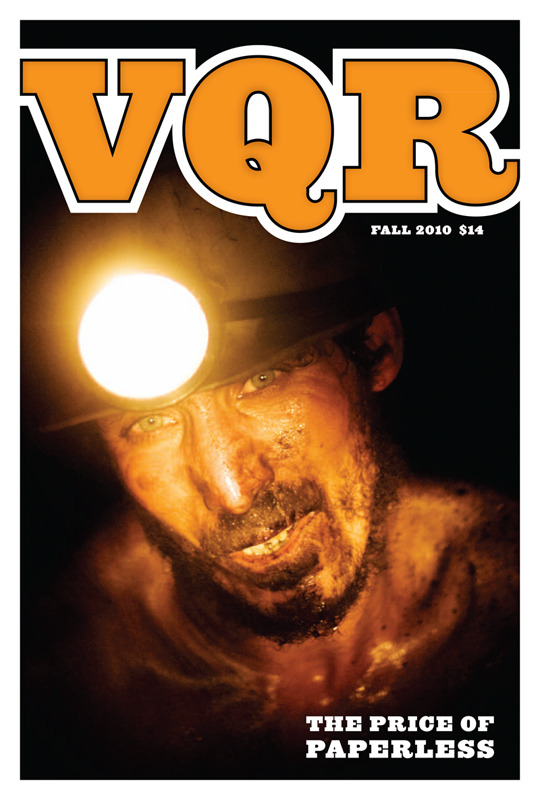
Table of Contents
Here Everything is Poison
By J. Malcolm Garcia, Photography by Darren McCollester
Fall 2010
Cold winds carry lead-filled dust from a nearby slagheap, a hundred million tonnes of toxic tailings, and scatter it on clothes hanging from laundry lines, on open buckets of drinking water, on the dirt children play in, and on the feral dogs running down alleys in this former French army barracks housing about 250 displaced Roma men, women, and children.
Editor’s Desk
The Price of the Paperless Revolution
By Ted Genoways
Reporting
Jharia Burning
By Allison Joyce, Photography by Allison Joyce
The Pit
By Nathaniel Miller
Father Copper
By Annie Murphy, Photography by Rodrigo Llano
Mother of God, Child of Zeus
By Jessica Benko, Photography by Bear Guerra
Digging Out
By Elliott D. Woods, Photography by Elliott D. Woods
The Solution: Bolivia’s Lithium Dreams
By Matthew Power, Photography by Fabio Cuttica
Tin Fever
By Delphine Schrank, Photography by Mark Craemer
Here Everything is Poison
By J. Malcolm Garcia, Photography by Darren McCollester
Essays
The Devil’s Tail: Reading From the Lives of Authors
By Robert Boyers
Fiction
Favorite Son
By Jennifer Haigh
The Digger
By Samanta Schweblin, Translated by Daniel Alarcon
Poetry
The Man
By Patrick Phillips
Work-Clothes Quilt
By Patrick Phillips
Tailing Dam of Baotou Steel
By Qin Xiaoyu
The Book of Lost Railroad Photographs
By Amy Beeder
Criticism
The Age of Inequality
By Oscar Villalon
The Activist Novelist
By Jacob Silverman
The Triumph of Capitalism
By Brian Sholis
Multimedia
The Underground Giant: Life in the Hard Rock Mines of Quebec and Ontario
By Louie Palu, Photography by Louie Palu
#article#the price of paperless#the Virginia quarterly review#green washing#lithium#mining industry#mining#paper#digital#technology#air pollution#pollution#environmental movement#environmental activism#environment#climate crisis#capitalism is a scam#congo
7 notes
·
View notes
Text
Romantic Poetry by James R. Coggins
She asked for my help in studying for her English exam. She is an accountant and does not get poetry. It gave me an opportunity to reacquaint myself with English poets of the 18th and 19th centuries.
This was the era of “Romantic Poetry.” This poetry was not about courtship between men and women but part of an important and often underestimated philosophical and cultural phenomenon called the…

View On WordPress
#Deism#Dover Beach#environmental movement#John Denver#Matthew Arnold#Star Wars#the force#Tintern Abbey#William Wordsworth
0 notes
Text
ENVIRONMENTALISM: THE ROLE OF SOCIAL SCIENCE AND HUMANITIES (ECO-ECONOMICS OR GEO-SOCIOLOGY?)
ENVIRONMENTALISM: THE ROLE OF SOCIAL SCIENCE AND HUMANITIES (ECO-ECONOMICS OR GEO-SOCIOLOGY?)
Posted on 27/11/2022
DOI: 10.13140/RG.2.2.25054.48963/1
Abstract
The following papers, mainly written in Bangla, concentrate on the roles of social science and humanities in the domain of specialized environmental science. If the disasters caused by climate change are believed to be inevitable fact, as predicted by some of the scientists, what shall be done by the social “engineers” (!)? Is…

View On WordPress
#environmental activism#environmental movement#Environmentalism#geo-sociology#green anarchism#radical environmentalism
0 notes